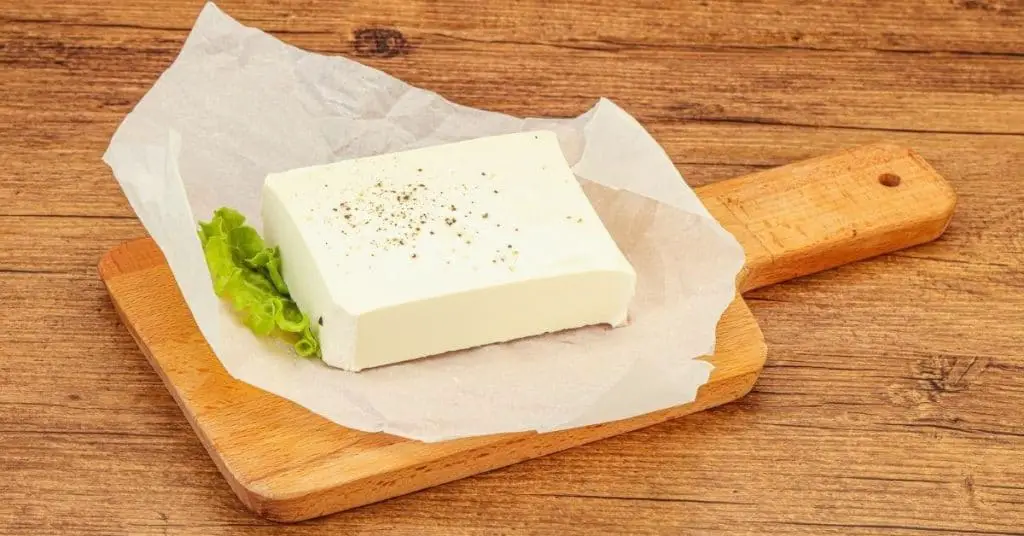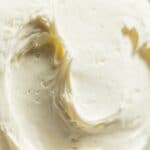In a nutshell: Yes, feta cheese can be frozen to extend its shelf life. However, remember that the cheese’s texture and flavor may slightly change upon thawing.
Popular in Greek and Mediterranean cuisine, fresh feta is a firm salty white cheese that can be crumbly or creamy. This Greek specialty cheese is usually purchased in a liquid such as feta brine or olive oil as a natural preservative to retain its salty taste and creamy texture.
It is no surprise that the Greek cheese is one of the main components in Greek salad, served traditionally with olives. Feta works well in pasta, pizza, mixed with vegetable bakes, and served in meat dishes.
In fact, feta cheese is a great addition to almost any savory meal. With such versatility, you definitely don’t want to throw any of it away.
To prolong the shelf life of feta cheese, the good news is that you can freeze it. There are however a few things you need to keep in mind when doing this. Read on for some feta cheese tips and a full guide to storing feta cheese in the freezer.
Can Feta Cheese Be Frozen?
Yes, you can store feta cheese in the freezer to prevent it from going to waste. Even though the cheese keeps well in the freezer, there will be some changes to the texture and flavor on thawing.
How does freezing affect feta cheese?
Freezing feta may reduce saltiness, however, this is not a bad thing for everyone as feta cheese tends to be on the salty side. If you prefer the intense saltiness, you can always submerge the cheese in a brine of salt and water once defrosted to restore some of the salty flavors.
Due to fairly high water content, the texture will change a little during the freezing process. The liquid part turns to ice crystals which results in defrosted feta cheese undergoing a slight structural change as the crystals melt.
Ultimately, you will end up with a crumblier cheese than before freezing, but even with the crumbly texture it is still great to use in many dishes and can be kept in olive oil with dried herbs after thawing for some extra flavor and moisture.
Follow the steps below to freeze feta blocks or preserve leftover feta in the freezer.
How To Freeze Feta Cheese
Step 1: Drain
Remove the feta cheese from the brine if stored in a liquid and dab it dry with a paper towel. It does not have to be completely dry, but you do want to remove the excess water from the feta blocks.
Step 2: Portion
Divide the feta into portion sizes that will be suitable for defrosting in the quantities you will need. It is best to cut large blocks into smaller portions if you are not yet sure what you will be using the feta for once thawed. This gives you a bit more flexibility.
Step 3: Plastic Wrap
Wrap each portion in a few layers of cling film, ensuring that no gaps are left open where air can enter and cause freezer burn.
Step 4: Pack
Place the wrapped portions into zip lock freezer bags. Press out as much air as possible before sealing tightly. If you have a vacuum sealer, vacuum seal it for even better preservation.
If you do not have a sealable freezer bag use an airtight freezer friendly container or wrap it well in layer of aluminum foil for extra protection.
Step 5: Label
Label the bag or plastic container with the date and contents to help you keep track of how long the cheese has been in the freezer.
Note: You can freeze crumbled feta in the same way in a freezer container with an airtight lid or plastic bag.
How To Defrost Frozen Feta Cheese
It is preferable to defrost feta cheese in the refrigerator. Remove it from the freezer and place it in the fridge overnight keeping it in the packaging. After thawing feta, remove the wrapping and store it in a brine of salt and water, olive oil, or plain in an airtight container.
If you are rushed for time, you can also place the bag of frozen feta in a bowl of cold water for a few hours to defrost. This will speed up the thawing process.
Types of Feta Cheese
Traditionally, feta cheese was made with sheep and goat milk only, but cow milk feta has now become commercially popular.
Feta is a white softly brined cheese generally found in block form. It has a salty flavor and varies from firm to soft varieties. The firm variety is tangy and can be crumbled into dishes, while the soft cheese is creamier, almost spreadable, yet holds its shape. It is, however, not as soft as cream cheese or cottage cheese.
You can buy feta cheese in a saline solution or brine to prolong its shelf life and retain its salty flavor and creamy texture. It is advisable to continue storing it this way in the refrigerator at home. When you are ready to use it, simply take it out of the brine and crumble or cut feta cubes into the desired dish. Feta can be eaten as is or added to other ingredients in cooked dishes.
FAQs
Conclusion
Although feta will not retain its exact creamy and salty characteristics once frozen, it can still add loads of rich flavor and deliciousness to your recipes. Its versatility makes it the perfect ingredient to always have on hand to add to pasta, pizza, vegetables, baked dishes, and casseroles to name but a few dishes.
Freezing feta cheese allows you to use it for a couple of months down the line instead of seeing it go to waste. Since it is not a cheap product, this is an especially good way to prolong its shelf life. The addition of feta will give your cooked meals a little extra pizzazz.
Up Next: Can You Freeze Cottage Cheese?
Photo AndreySt/depositphotos









